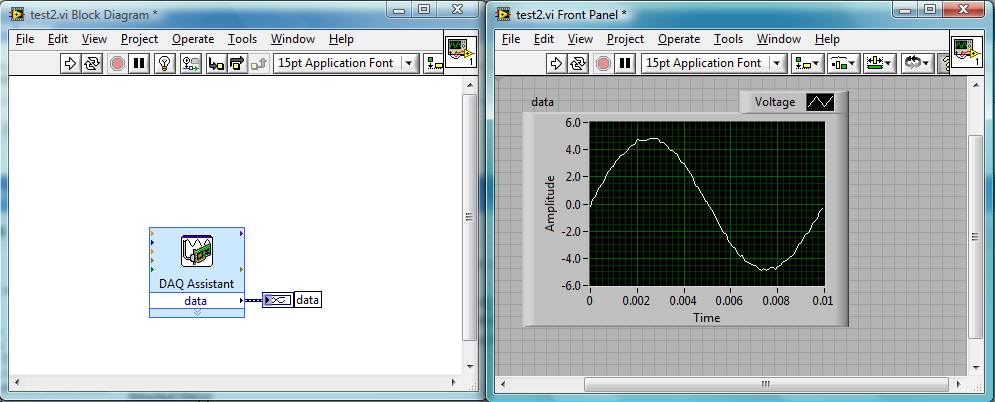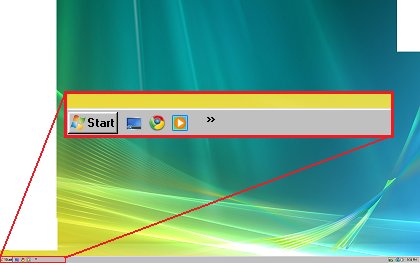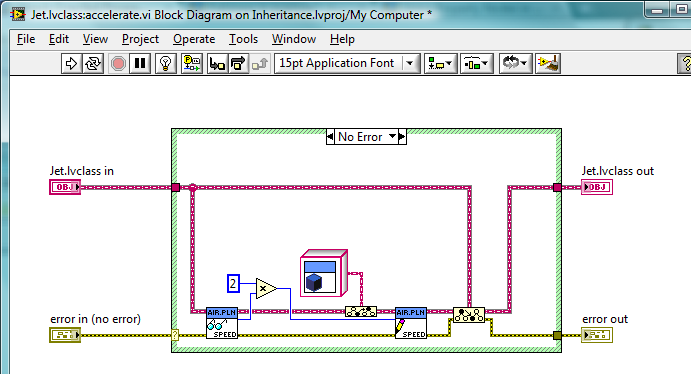-
Posts
2,397 -
Joined
-
Last visited
-
Days Won
66
Content Type
Profiles
Forums
Downloads
Gallery
Posts posted by jgcode
-
-
QUOTE (Neville D @ Mar 20 2009, 05:25 AM)
Real-Time Target System Replication
I haven't used the code personally but I know they exist as I was investigating for a similar thing for a project that went cold last year.
Now there is one for FPGA too.
FPGA Target System Replication
Cheers
JG
-
QUOTE (JohnRH @ Mar 16 2009, 08:29 PM)
Like you say - it really depends. I suspect that very few LabVIEW programmers do nothing but write software. Off the top off my head here is a short list of non-LabVIEW stuff that I like to see in our programmers:1) solid understanding of computers and networking
2) basic understanding of serial communication protocols (RS232/485)
3) electronics! (at LEAST enough to design basic DAQ setups)
4) comfortable using an oscilloscope
5) basic math (calculus and statistics)
I agree but would like that
4) Should be Oscilloscope + Function Generator, PSU's DMM etc..
and would like to add:
6) Ability to generate Documentation (Specs, Requirement Docs, Tests etc..)
7) Code in Web Technologies e.g. HTML/XHTML/Javascript/Ajax/PHP/MySQL
8) Proficient with Source Code Control
9) Personality (for programmer-client interaction)
10) Knowledge of system integration
If everyone who posted gave 5 responses we could get a very good list going!
-
QUOTE (RAJKU @ Mar 15 2009, 03:02 PM)
Ya you are right. But i am not trying to access a VI that is built into exe. I am trying to access a VI that has no connection with the exe. I am using Open Application refnum and then pass the refnum to open VI refnum and then trying to open the block diagram reference. This is same as opening a VI in LabVIEW right. Please correct me if I am wrong.Without looking at any code -
Make sure you are specifying the correct LabVIEW application instance.
In the development environment you may not have a problem but...
By leaving the name empty when creating the app reference - the exe will be referring to itself.
But in the exe you want the reference to refer to an instance of the LabVIEW dev environment (so LabVIEW dev environment can open the VI/BD via VI server - as the Run Time does not have this functionality).
Could this be a source of error for you?
-
QUOTE (Ic3Knight @ Mar 8 2009, 05:44 AM)
The problem I have is that now, if you make any change to the tab control typedef, the refnum cluster "breaks"... why?!Hi Paul
The FP refnum control/indicator breaks because when you right click the control reference and select create indicator/control it is not linked to the typedef file.
It only contains the a snapshot of the current datatype.
This will be the case of other datatypes that can change also e.g. clusters, enums (tab)...
Check the video below (no audio) to see one way on how to link the FP refnum control/indicator to the typedef file.
Regards
JG
In the video I create a tab typedef control,
Then I create a control reference and a FP refnum control/indicator,
I then edit the FP refnum control/indicator so that it is associated with the typedef control,
I use the run arrow because sometimes it seems the datatype checking is done at run time (so if it appears broken sometimes its not - and vice versa).
Sometimes I also make the FP refnum control/indicator a typedef so when I use it in clusters I know it is correctly linked and not a snapshot of data.
This can catch me out, no different to when you create a constant off of a Value attribute of a generic property node for an enum/cluster datatype!
-
QUOTE (student11 @ Mar 7 2009, 10:31 AM)
Hi Student - check these links for some background info.
http://en.wikipedia.org/wiki/Uninitialized_variable
Regards
JG
-
QUOTE (Linx @ Mar 7 2009, 07:50 AM)
Hi. im completely new to labview, but my boss asked me create a voltage vi for a sensor last week.we are using DAQPad 6070E to measure it,
Nevertheless, i tried to make a vi that looks like some other examples, but im sure its wrong,
so i was hoping can somebody please point out which part isn't right and how should i do it,
Just wire the data output of the DAQ Assistant Express VI into your "data" waveform graph.
http://lavag.org/old_files/monthly_03_2009/post-10325-1236393850.png' target="_blank">

-
Dynamically loading class plugins would be also affected as well when override methods are used to extend the behaviour of the top level class.
So I can definitely understand that this would behavior is not recommended and why it has been implemented this way.
Thanks!
-
QUOTE (Aristos Queue @ Mar 6 2009, 09:12 AM)
I feel this makes LabVIEW a more robust language, something that is important in all the industrial control and hardware feedback situations that LabVIEW is used for.Thanks for the great reply AQ.
You are a great resource to these forums and your time is much appreciated. :beer:
-
Solution in cross post.
-
-
QUOTE (Aristos Queue @ Mar 6 2009, 05:59 AM)
No, you cannot do what you are seeking to do. It is impossible, by design, and if you find a way to do it, please let me know so we can fix it.Thanks everyone.
I can't comment on the OOA&D aspect of the code as this was just an example.
And I have never had the need to do this in the past.
Therefore, even though it is possible to do this in JAVA - are you saying that you would never do this in the real world?
Is it just that the example sucks?

-
I have a Jet class that inherits from Airplane class.
Both methods have a setSpeed vi which are different.
In another Jet method accelerate I am trying to call the parent Airplane setSpeed method.
When I wire the Jet object into the Airplane setSpeed method it dynamically changes to the Jet setSpeed method (understandable).
I thought using the To More Specific/Generic Class nodes would stop this behavior?
But even though in edit time the Airplane setSpeed VI is shown (as per the picture) it runs the Jet setSpeed at runtime (verified by debugging).
Obviously if it was the same method (override) I could use the Call Parent Method node inside the VI but its not this case.
Is there a way to call a parent-method-VI in a different child method, when the child has an override method for that parent-method-VI?
I am trying to implement some JAVA code in LabVIEW - so JAVA can do it.
Regards
JG
I am coding in LV8.6.1
-
QUOTE (rpscott02 @ Mar 5 2009, 10:31 PM)
One more issue - i'm having trouble making the blinking property node activate on after an even happens (namely, a 'no error' signal from another subVI). For some reason, it blinks as soon as I begin running the program. I've tried event and case structures and neither worked. I thought simply putting the property node in the error flow would cause things to happen sequentially but no luck there either. Any suggestions?I will take a stab in the dark here without seeing your code... if you are wiring an error to a property node and the wire contains an error then the property node will not run.
-
Hi
Does anyone knows if LabVIEW DSC works on XP embedded?
These two posts are interesting: WinCE post, cRIO post.
Links DSC Help, shared variable,
Regards
JG
-
QUOTE (Waleed Ali @ Mar 5 2009, 03:26 AM)
You can share the cDAQ Timing Clock with all modules quite easily in DAQmx.
Another way is to set the Task in MAX.
Timing can also depend on your module as some modules can override the Timing you set.
E.g. (Off the top of my head) 923x set sampling rate to set-intervals of 50k.
Also check out the http://zone.ni.com/devzone/cda/tut/p/id/5434' target="_blank">NI KB on DAQmx.
Cheers
-
As part of working for an NI Alliance member I attended an NI presentation today.
I was introduced to a new catch-phrase that I had not heard before - Instrumentation 2.0.
"Instrumentation 2.0 is a software based approach to instrumentation empowering engineers to create user-defined results from raw measurement data"
This was the first time I had heard the term mentioned and used to define and document an evolutionary step in the industry - just like Web 2.0.
On further research it seems that this was mentioned all the way back in 2007. But I can't find a lot on it.
Have you heard it used?
Is it an Industry or National Instruments only term?
Did it not catch-on?
-
QUOTE (rpscott02 @ Mar 3 2009, 06:44 AM)
I am guessing you are able to create an implicitly linked property node by right-clicking a control and selecting create>>property node?
You can use property nodes in subVIs by using explicitly linked property nodes.
To create an explicitly linked property node you need to create a control reference (by right-clicking a control and selecting create>>control reference) for the control object and wire it to the generic property node (found on the Functions>>Application Control sub-palette).
Depending on the version of LabVIEW you have, an easier way is to place a marquee around some implicitly linked property nodes (i.e. to select them with the mouse) then go to edit>>create subvi and LabVIEW will do the above for you.
Don't forget to close your references!
This tut should be good information for you.
-
-
-
QUOTE (zmarcoz @ Feb 24 2009, 04:13 AM)
Is it numeric = single value; or an array = buffer
NI run a DAQmx series - check it out http://zone.ni.com/devzone/cda/tut/p/id/5434' target="_blank">here.
-
I made this post a while back and did not have success running DAQmx.
I have not tried the new VMWare 2.0 with DAQmx yet.
Good to hear people have it working.
VirtualPC is not good as it does not have USB support last time I used it.
Anyone else out there tried using VMWare with DAQmx?
-
QUOTE (zmarcoz @ Feb 21 2009, 08:33 PM)
If the VIs are not installed on your system you can download the Traditional NI DAQ drivers from http://joule.ni.com/nidu/cds/view/p/id/570/lang/en' target="_blank">NI Support .
The last drivers produced were version 7.4.4 in 07 as they have been superseded by DAQmx.
Cheers
JG
-
QUOTE (crelf @ Feb 21 2009, 02:25 AM)
The only thing that chokes me up is how http://www.news.com.au/dailytelegraph/story/0,22049,23479944-5013124,00.html' rel='nofollow' target="_blank">dense Lara Bingle is but how much money she gets.
-
I updated the wiki with your response AQ - cheers.





LabVIEW creates broken Data Member Access VI
in Object-Oriented Programming
Posted
QUOTE (Michael Aivaliotis @ Mar 28 2009, 05:36 AM)
I think it works fine unless the control is a type def.
Seems LabVIEW can't handle it??